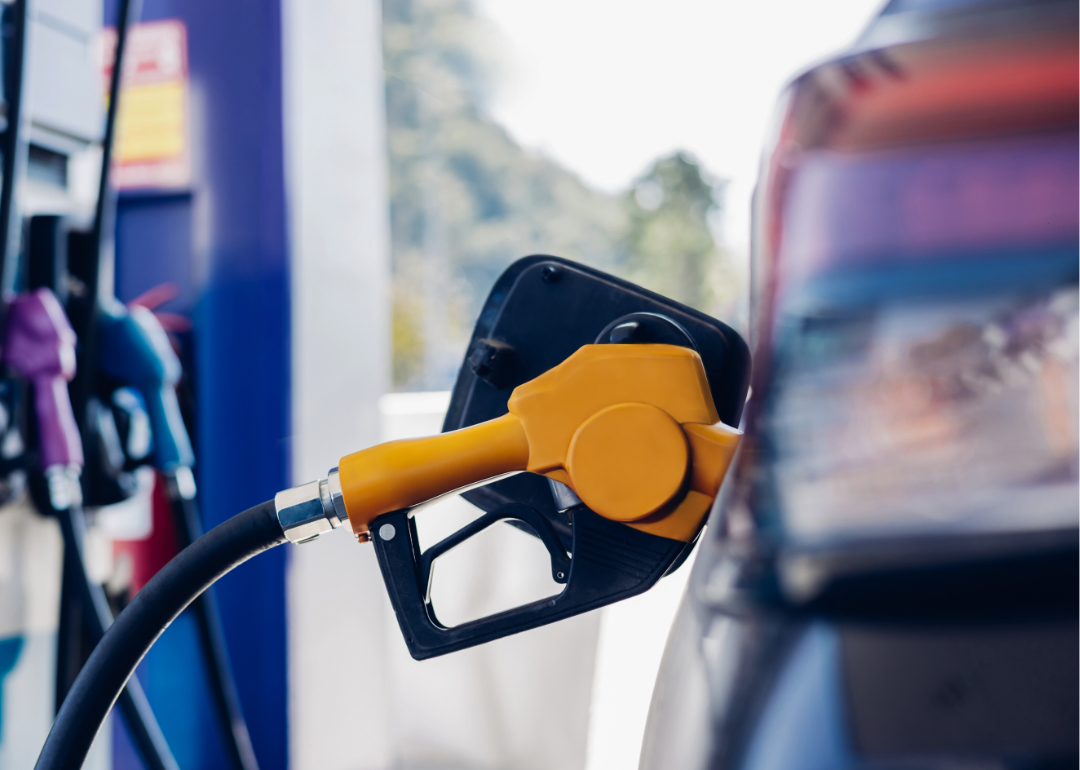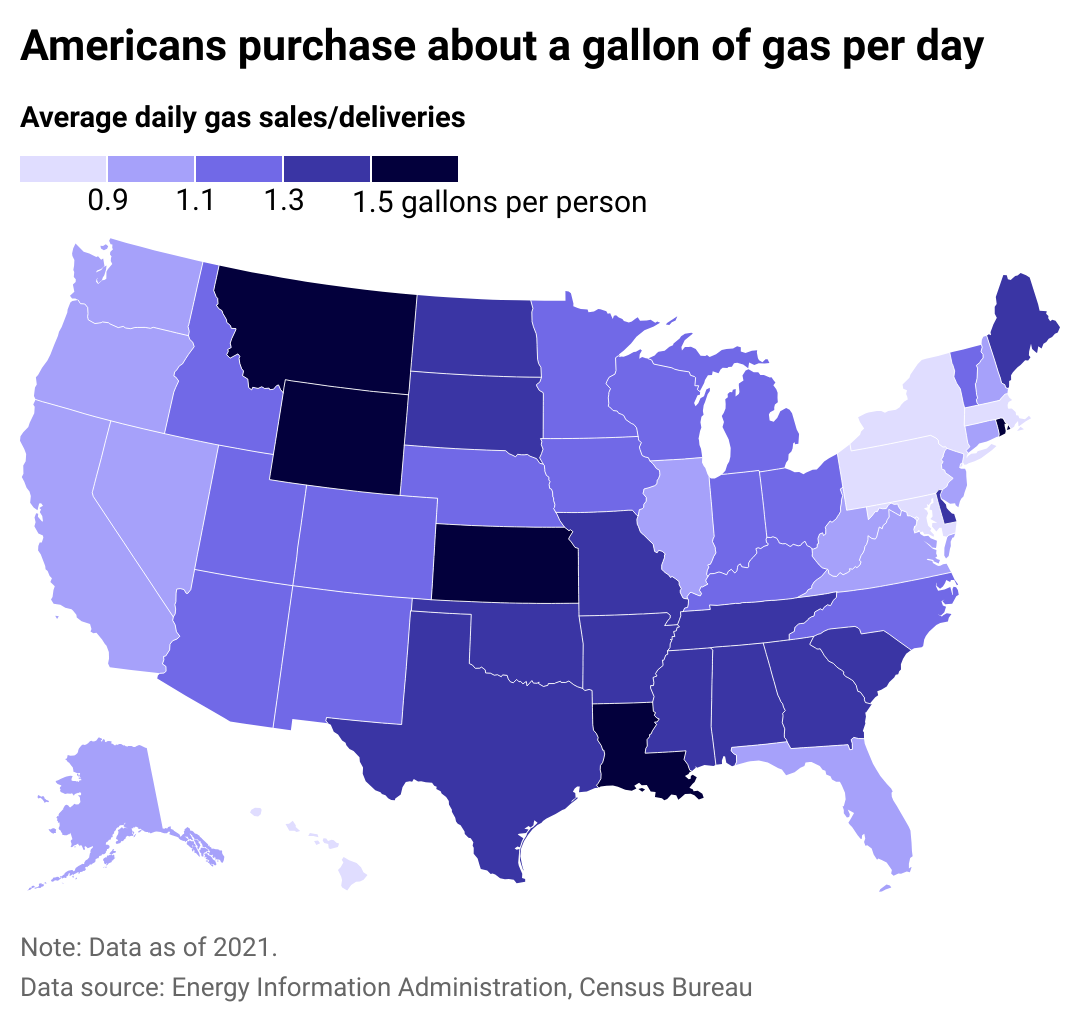
How North Carolina's increasing gasoline sales compare nationwide
This story originally appeared on Truck Parking Club and was produced and distributed in partnership with Stacker Studio.
How North Carolina's increasing gasoline sales compare nationwide
Daily gasoline consumption in North Carolina has grown by 130,700 gallons over the past five years, Energy Information Administration data shows.
Residents of North Carolina purchased 12.2 million gallons of gas daily in 2021—the latest state-level data available—totaling about 1.2 gallons per person. This marks a 1.1% increase since 2016, compared to a 5.7% decrease nationwide over the same period.
Truck Parking Club compiled information on North Carolina gas consumption as part of a larger national analysis mapping states' daily gas sales per capita. The most recent state-level data available is for 2021, meaning these statistics reflect the COVID-19 pandemic-era dip.
Americans overall are using less gas. From 2017 to 2022, daily national gas sales fell by about 6.5 million gallons. Even more striking, Americans purchased 21.2 million fewer gallons of gas daily in 2021 compared to 2016, as the pandemic depressed gasoline sales.
During the pandemic's peak, remote work and limited in-person events meant less driving and therefore less gas used. Some pandemic shifts that impact gas usage have been sustained, including remote work. Just over 15% of Americans worked from home in 2022, compared to about 5% in 2017. That swath of remote workers came primarily from those who previously drove to work, thus decreasing daily commuters and in turn gas sales.
Other factors contributing to lower gas consumption among Americans include a gradual increase in fuel efficiency. Electric vehicles now make up a larger share of cars on American roads. Relatively high gas prices coupled with other rising costs mean many Americans are cutting back and using less fuel when possible.
However, these trends have not taken root equally across the nation.

Americans in Northeastern, Western states consume less gas
Generally, those in Southern states consumed more gas while those in the Northeast and West utilized less gas.
Montana maintained the highest gas sales at 1.9 gallons per person per day in 2021. It was followed closely by Wyoming (1.7 gallons), with Louisiana, Kansas, and Rhode Island rounding out the top five (1.5 gallons).
Montana and Wyoming, neighboring states in the U.S. mountain region, have similarities contributing to higher gas consumption. They are two of the nation's least densely populated states, with above-average rates of commuting by car and a lower prevalence of remote work. EVs remain unpopular, and charging infrastructure is sparse. Public transit usage ranks in the bottom 15 nationwide, according to U.S. News & World Report—as it does for Louisiana and Kansas. The latter two states also have extremely low gas prices, likely contributing to higher sales rates.
Rhode Island stands out among the high-consumption states as a small, densely packed state with decent transit ridership. Relatively low gas prices may contribute to increased usage.
Meanwhile, several other Northeastern states saw the lowest gas sales per capita: Washington D.C., New York, Pennsylvania, Maryland, and Massachusetts, states with high population density and high ridership rates on robust public transportation systems. What's more, the average income of residents in these states is higher than national averages, making it more feasible to purchase newer, more fuel-efficient cars and EVs. Plus, with shorter travel distances and relatively dense—and expanding—EV charging infrastructure in these metro areas, typical drawbacks of EVs, such as a limited driving range or lack of charging stations, aren't as relevant.
Compounding factors, including density, public infrastructure, gas prices, and average income, affect gas use across geographies. Continued advancements in fuel-efficient transportation technology and the adoption of alternative-fuel vehicles like EVs will likely continue chipping away at gas consumption in years to come.
This story features data reporting and writing by Paxtyn Merten and is part of a series utilizing data automation across 50 states and Washington D.C.



